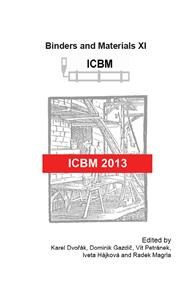p.3
p.9
p.13
p.17
p.21
p.25
p.30
p.34
Study of Increasing of Belite Reactivity
Abstract:
Within the research at Institute of Technology of Building Materials and Components the questions of belite cement hydration speed improvement have been solved for a long time. In comparison with common Portland cements (alite type) these cements obtain almost identical final properties but the main shortage of them due to which they are not practically produced is their very low hydration process speed and thus insufficient initial strength for construction practice. A development of lower hydration heat is another difference of the belite cement from common Portland cements. In case of concreting of massive constructions as for example water dams this can be perceived as an important benefit, however in case of concreting during cold season of the year this appears as a definite negative. The belite cement also shows a lower inclination to concrete efflorescence and higher strength to aggressive environment due to lower CaO content. Both of the properties can be definitely understood as benefits compared to orthodox alite clinker. The raw material base of belite cements require less lime than production of common Portland cements and on that ground the implementation of its production would be a positive benefit for ecology in sense of CO2 emission reduction and also in improvement of economy of non-renewable raw material sources. The raw material is burnt to lower temperature than alite cement resulting in lower CO2 emission released in the atmosphere during the cement production. In addition at reduction of the temperature for more than 100 °C also heat consumption is reduced for 10 to 14 %, which has positive economical and ecological effects due to lower consumption of fuels. Within the research focussed on improvement of belite cement properties the study of hydration process course and technological properties of belite (C2S) prepared using low-energy burning modes was the aim of the research.
Info:
Periodical:
Pages:
9-12
Citation:
Online since:
February 2014
Authors:
Keywords:
Price:
Сopyright:
© 2014 Trans Tech Publications Ltd. All Rights Reserved
Share:
Citation:


